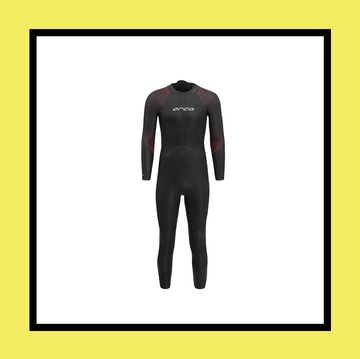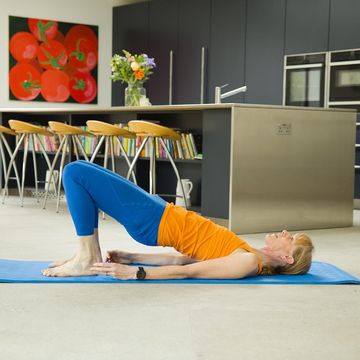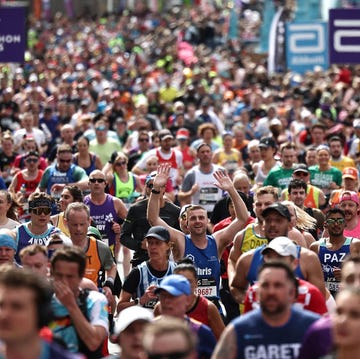If you decide to start following a structured training plan to improve your running or aim for a target race, you'll probably soon come across the term 'interval training'. But if running is still very new to you, then it might well be an entirely new concept. We're here to tell you everything you need to know about interval training – and how, if you build it sensibly into your training, you'll soon see the benefits.
What is interval training?
Interval training is really just a form of speedwork. And why should you do speedwork? Essentially, because it's a way of practising running faster for shorter periods, to improve your speed overall. It can do wonders for your fitness and take you to the next level in your running.
If you started running with a walk/run plan or a Couch to 5k programme, you will have done structured or timed bursts of running interspersed with walking breaks to recover and let your heart rate settle. Interval training is really no different from this: you run faster for a bit, recover at a jog or a brisk walk, then do it again for a set number of 'repeats', also known as 'repetitions' or simply 'reps'.
What are the benefits of interval training?
When we start running and building up the time we can continuously run for, we improve all the time. Adding extra runs (perhaps one additional one per week) or slightly increasing the distances we run can make us that little bit fitter. But if you have been running regularly for a while and have noticed that you've hit a plateau, now could be the time to add intervals to your training.
This plateau is only natural – your body has essentially adapted well to the new stresses and strains you are placing it under when you run. That's great news for your general fitness, but means you won't see those big leaps in fitness, strength and speed that you did initially – until you mix things up again. So incorporating that interval training session into your weekly schedule could be the big game-changer.
As well as helping you get faster, a regular weekly interval session could:
- Boost your heart health: high-intensity interval training (HIIT) seems to be a good way to go if you want to keep your ticker in good working order. A 2022 systematic review, published in Frontiers in Cardiovascular Medicine, found that high-intensity interval training is better than medium-intensity training at improving cardiorespiratory fitness.
- Burn more calories: if that's your goal, then a slow and steady run is all well and good, but if you push yourself during an interval session, your body has to work harder to recover afterwards, which burns more calories, even after you've finished exercising.
- Leave you with more free time: interval training is a great way of fitting in a quality session in a short amount of time – great if you're squeezing in your running sessions around other commitments.
- Give you a runner's high: pushing yourself to run faster for short bursts can see those endorphins (the feel-good hormone) surge, leaving you feeling happy and energised!
How does interval training improve your speed?
If you only want to run at a comfortable pace, then intervals aren't for you, because in order to get something out of them, you do need to push yourself to run faster than you usually do. But that's how you improve your speed.
When you push your body, and get your heart rate up higher, you will be training a different 'system' to that which is working when you run slow and steady. Easy paced, conversational runs are great for building aerobic fitness, but if you want to train your body to reach a higher level of anaerobic fitness, then you need to run harder, for short periods.
Is interval training good for beginners?
Definitely! Always remember that 'harder' and 'faster' are all relative terms – there is no required pace for an interval session, simply that you do your intervals and what is harder for you. As we said earlier, those early walk/run sessions you did when you first started running were themselves a form of interval training, so really, you're actually already familiar with the sessions. Now it's simply about pushing yourself to run that bit faster. And remember, those recovery intervals can still be a brisk walk if you need them to be – it's all simply about taking it at your own pace.
How often should I do interval training?
Interval sessions will do wonders for your race times, but remember, these are tough sessions, and your bones, tendons and muscles need time to adapt to the stresses of regular training.
When you are just starting out with interval sessions, once a week is plenty. You want to make sure that you don't overload your muscles and tendons and cause an injury – and to get the best out of sessions, you need to be properly rested. Once you are used to interval training, you can add more to your training schedule, but never run two hard sessions on back-to-back days.
'Be sure to give yourself at least one easy day between your harder sessions, and bear in mind that most runners will respond better to two or even three easy days between such sessions,' says RW's head coach Tom Craggs.
Even elite athletes won't do more than three interval sessions in a week, and at least one of those will probably be at slightly lower intensity anyway, so make sure you allow for adequate rest and recovery.
How fast should I run each interval?
During an interval session, you should warm up really thoroughly. You'll then run for a set amount of time (or sometimes for a set distance) at a high intensity level, before jogging or brisk walking for a set amount of recovery time, repeating this until you've finished the session, followed by a very gentle cool-down walk or jog.
But how to judge your pacing? The most important thing to remember is that there is no one pace that fits all. Your pace depends not only on what level you are currently at with your own fitness, but also the type of session and what you are training for. For shorter intervals, you may well be running at a higher speed or intensity than longer ones, but those longer ones may be more useful if, say, you are training for a longer race.
One of the easiest ways to gauge your pace is by using the rate of perceived exertion (RPE) scale – where 1-2 equals very light intensity and 9-10 equals maximum intensity.
When you're first starting out, for short intervals of 30 seconds to one minute, aim for a RPE of 8 or 9 (your recovery intervals should be at a light intensity of around 2 to 3). For longer intervals of around two minutes, aim for a RPE of 6 to 7.
But what does all this feel like? If you're struggling to gauge whether you're pushing hard enough (or too hard), do the talk test: try speaking out loud. If you can only say a word or two, that will be your 8 to 9 intensity pace. If you can say three to four words, that's your 6 to 7 intensity pace.
In the perfect interval session, you will run your final interval at the same pace as the first – staying consistent throughout. That is much better training than going all out in the first rep, then tailing dramatically off and slowing down in each one. But that can take practice to get right – plenty of experienced runners still do it – so just remember that finishing strong is great for your fitness, and your confidence. Many top coaches would say that they would far rather their athletes finished a session feeling as if they could run one more rep, than absolutely spent.
How to vary your interval sessions
When it comes to intervals, there are three variables: the length of the intervals, the number of intervals and the duration of the recovery intervals. This means there's an almost infinite number of variations you can do, and that interval sessions are easily tweakable. Which session you opt for can depend on your fitness level and/or goal race distance. Take time to learn what works for you – at first, it’s better to build up gradually, with perhaps just four to six shorter intervals, with longer recoveries. As you progress, your pace will improve, your recoveries will be more effective (and your heart rate come down quicker) and you’ll be able to run faster for longer.
Simple interval sessions for beginner runners
Simple 1 min intervals
For those new to interval running, the following is a great and simple first session to try:
- 5 minute gentle jog warm-up
- 1 minute fast interval (at 8-9 RPE)
- 2 minute recovery (jogging or brisk walking, 3-4 RPE)
- Repeat 4-6 times
- 5 minute gentle cool-down jog
Parkrun session
If you are hoping to improve your 5K/ parkrun time, then try longer intervals at a lower intensity:
- Warm up with a brisk jog
- Run half a mile at your goal parkrun pace
- Jog or brisk walk for 90 seconds
- Repeat x 6
- 5 minute gentle cool-down jog
Pyramid session
If you prefer to run by time not distance, why not try what's called a pyramid session?
Between every interval your recovery should be 1-2 minutes at a very gentle jog or brisk walk. Tailor the session to your own goals – you can leave out the 'top' of the pyramid and peak at 3 or even add more as you progress.
- Warm up with a brisk jog
- 1 minute fast interval (at 8-9 RPE)
- 2 minute fast interval (at 7-8 RPE)
- 3 minutes fast interval (at 7-8 RPE)
- 4 minutes fast interval (at 6-7 RPE)
- 3 minutes fast interval (at 7-8 RPE)
- 2 minute fast interval (at 7-8 RPE)
- 1 minute fast interval (at 8-9 RPE)
- 5 minute gentle cool-down
Fartlek run
Fartlek sessions are a kind of interval training which can be less formal and structured and more fun – fartlek is Swedish for 'speed play'.
Pick a route over mixed terrain and include anything from 10-25 harder efforts of between 15 second and 4 minutes, or use lampposts, hills or landmarks as targets. Run easy or steady during the recoveries.













